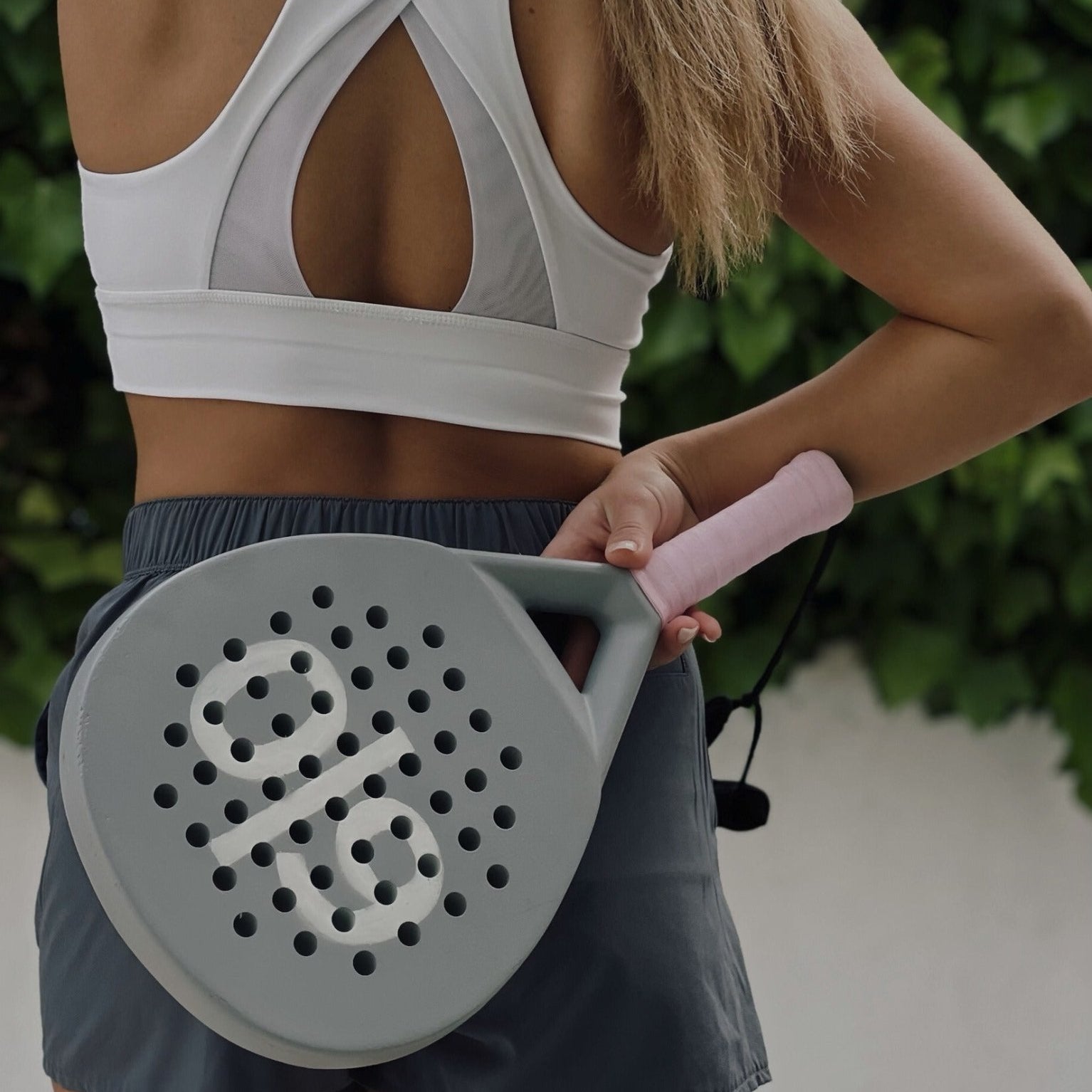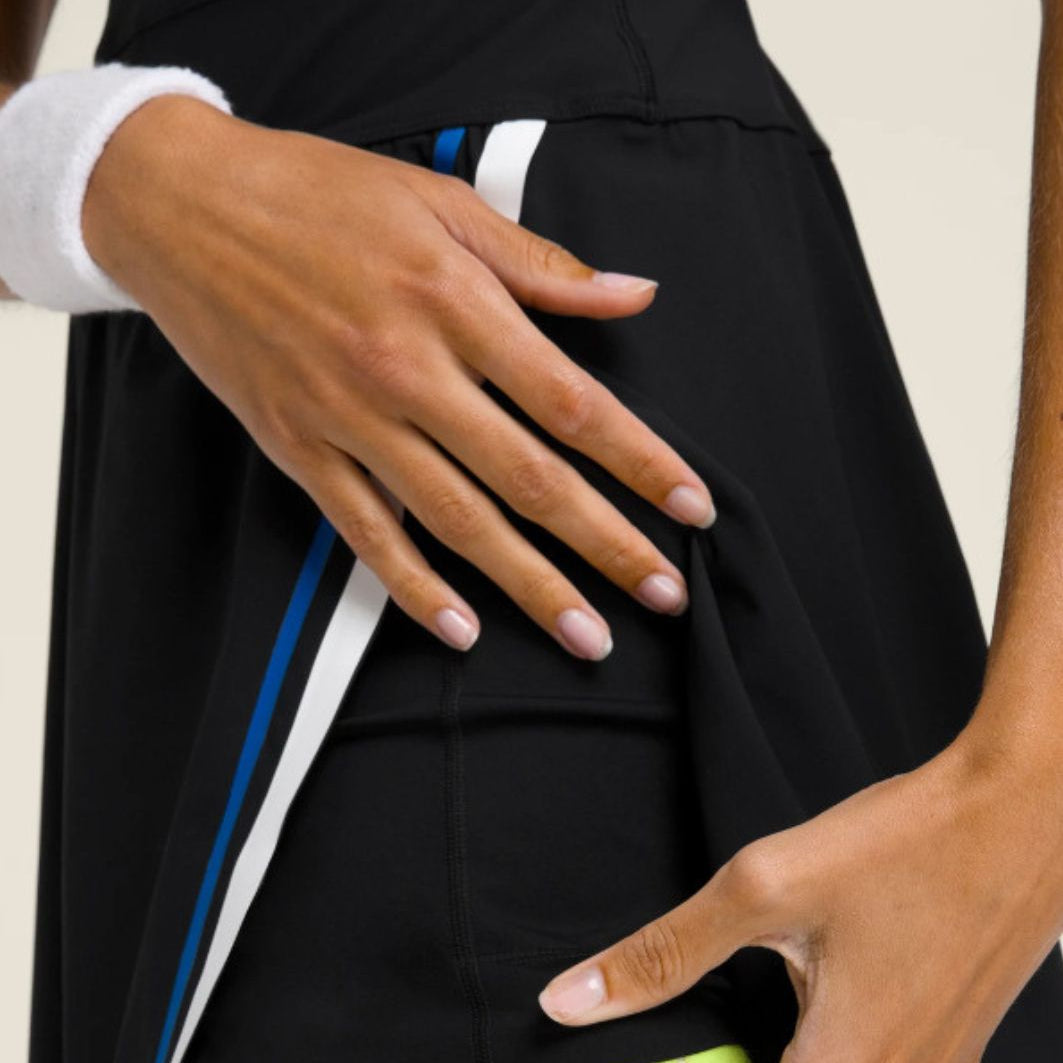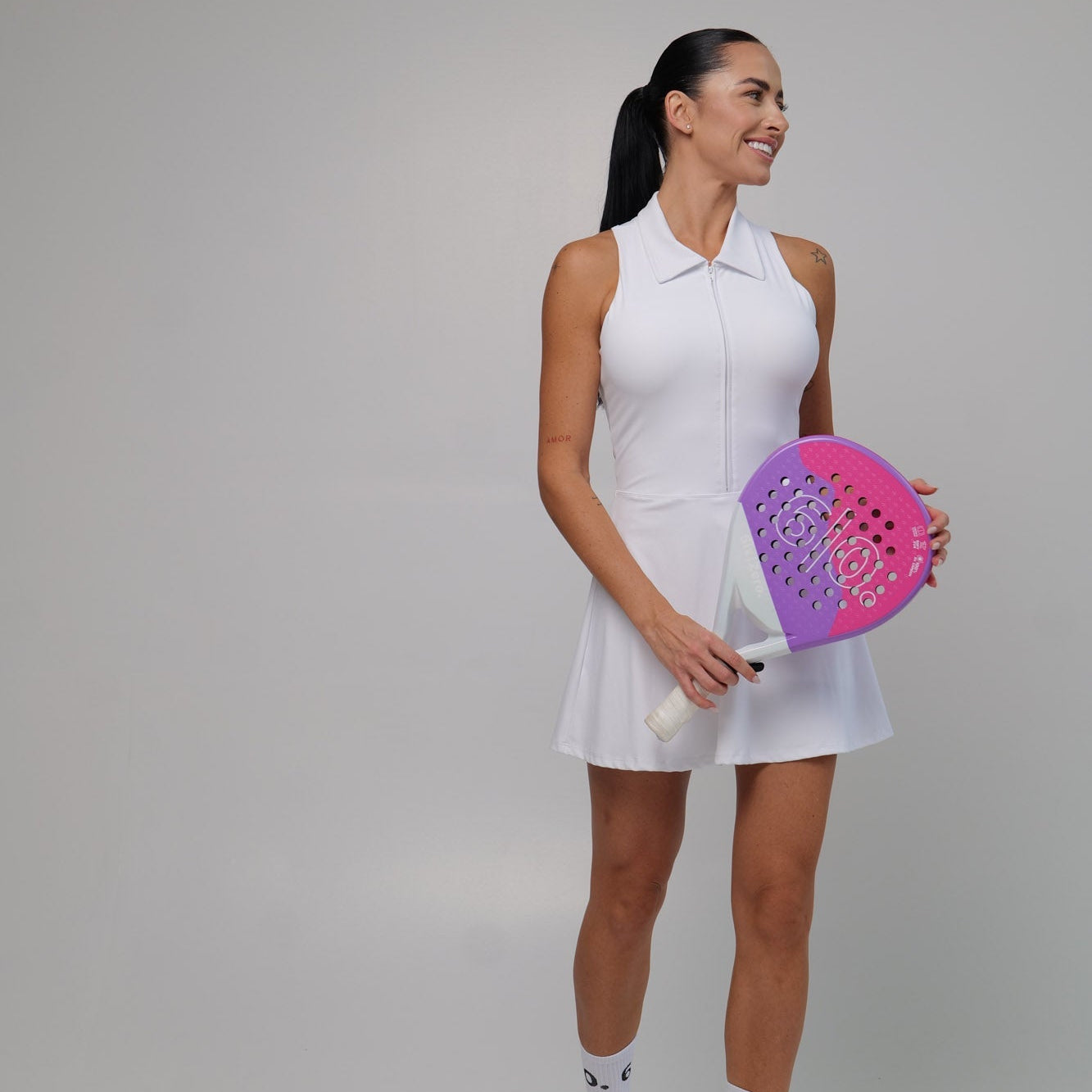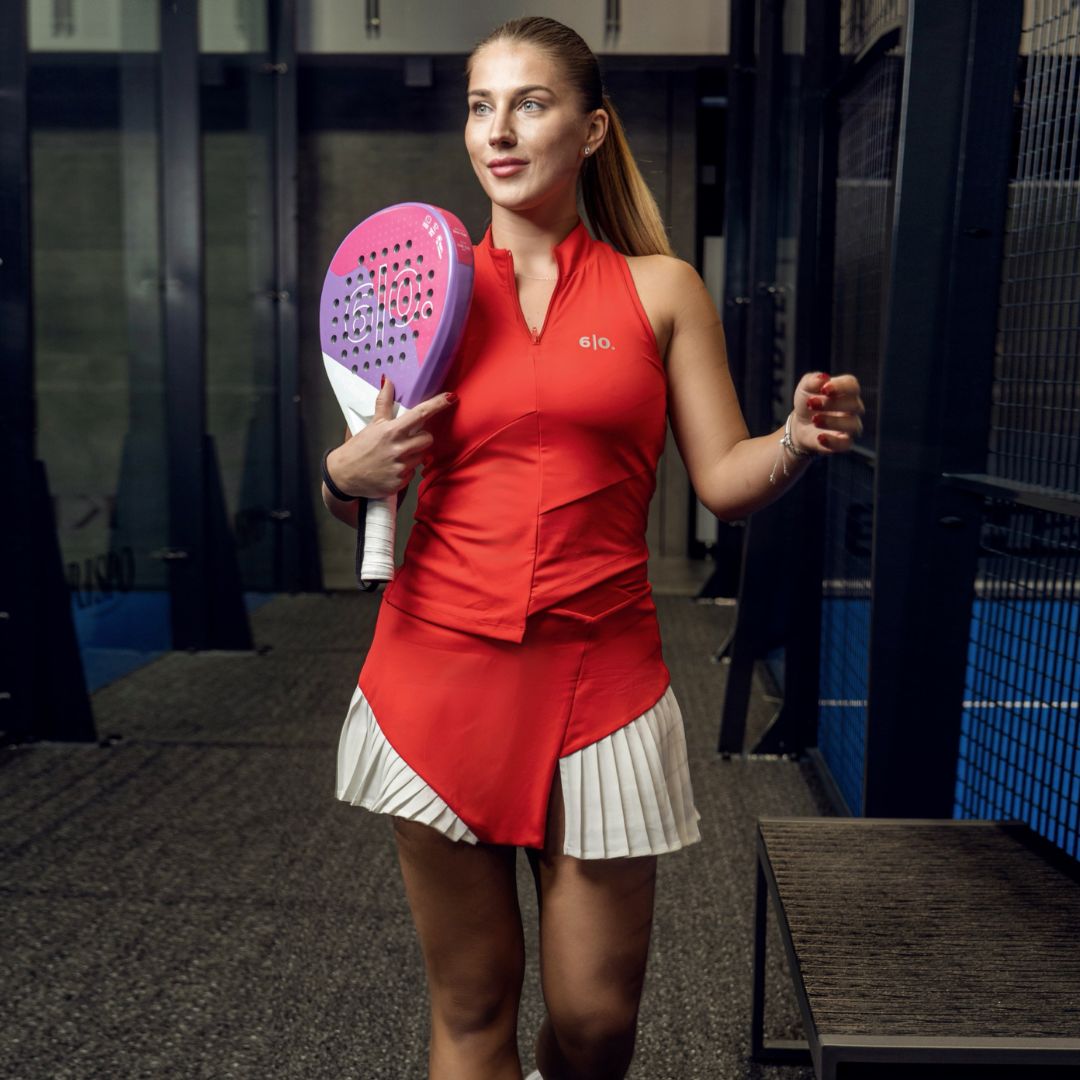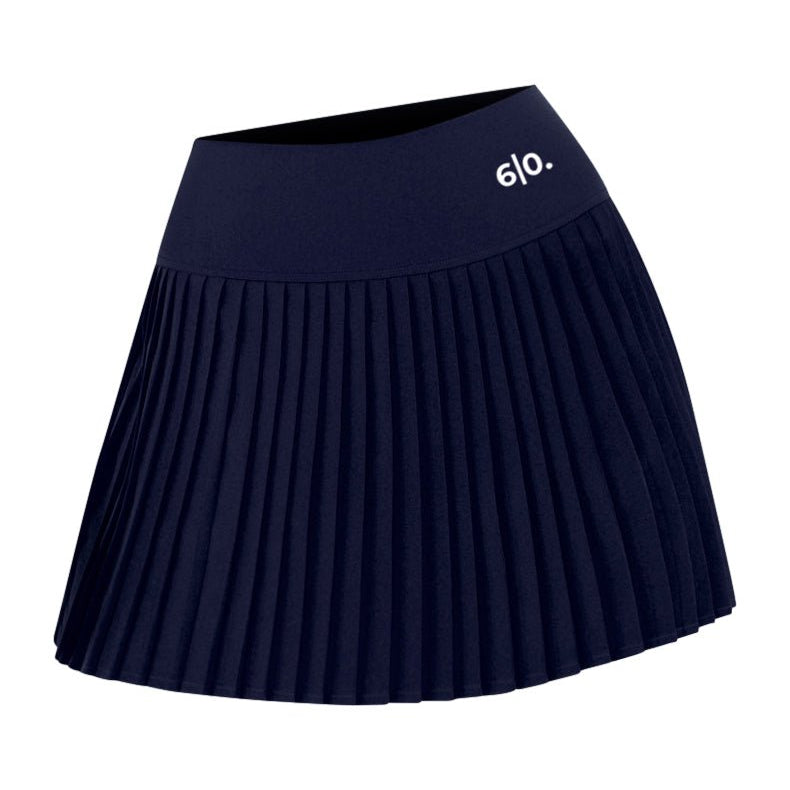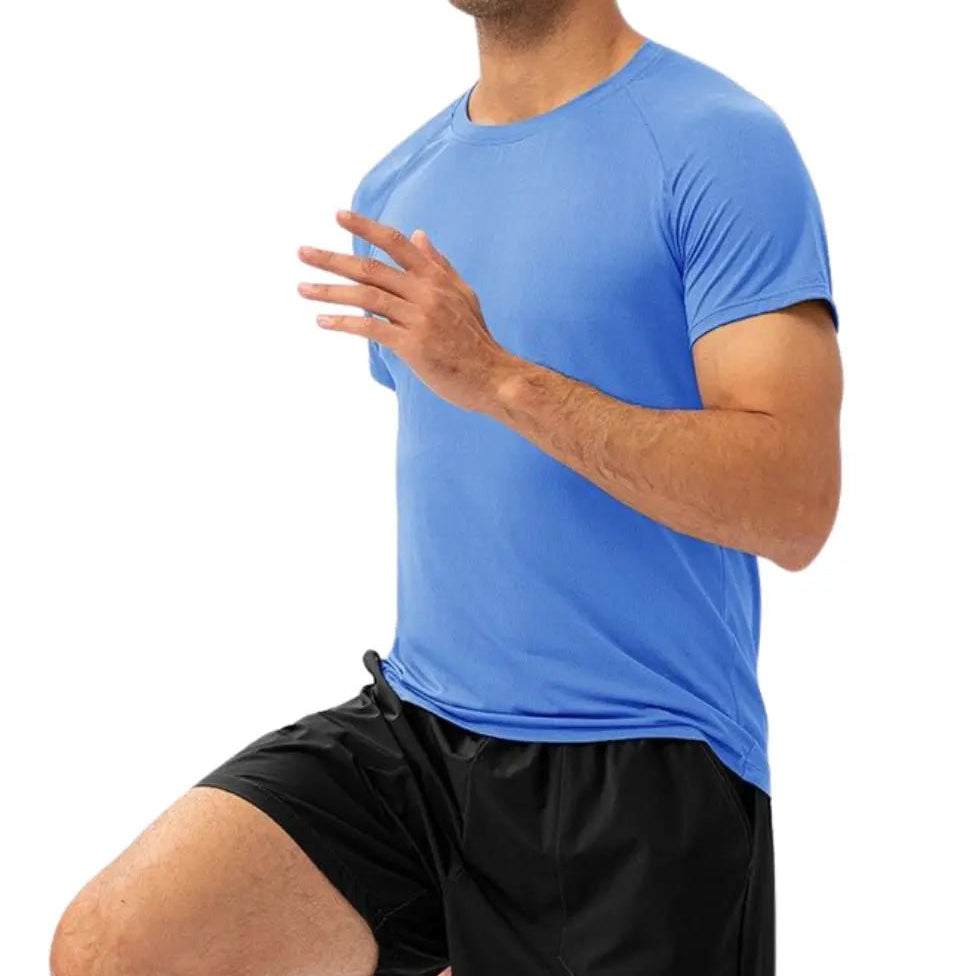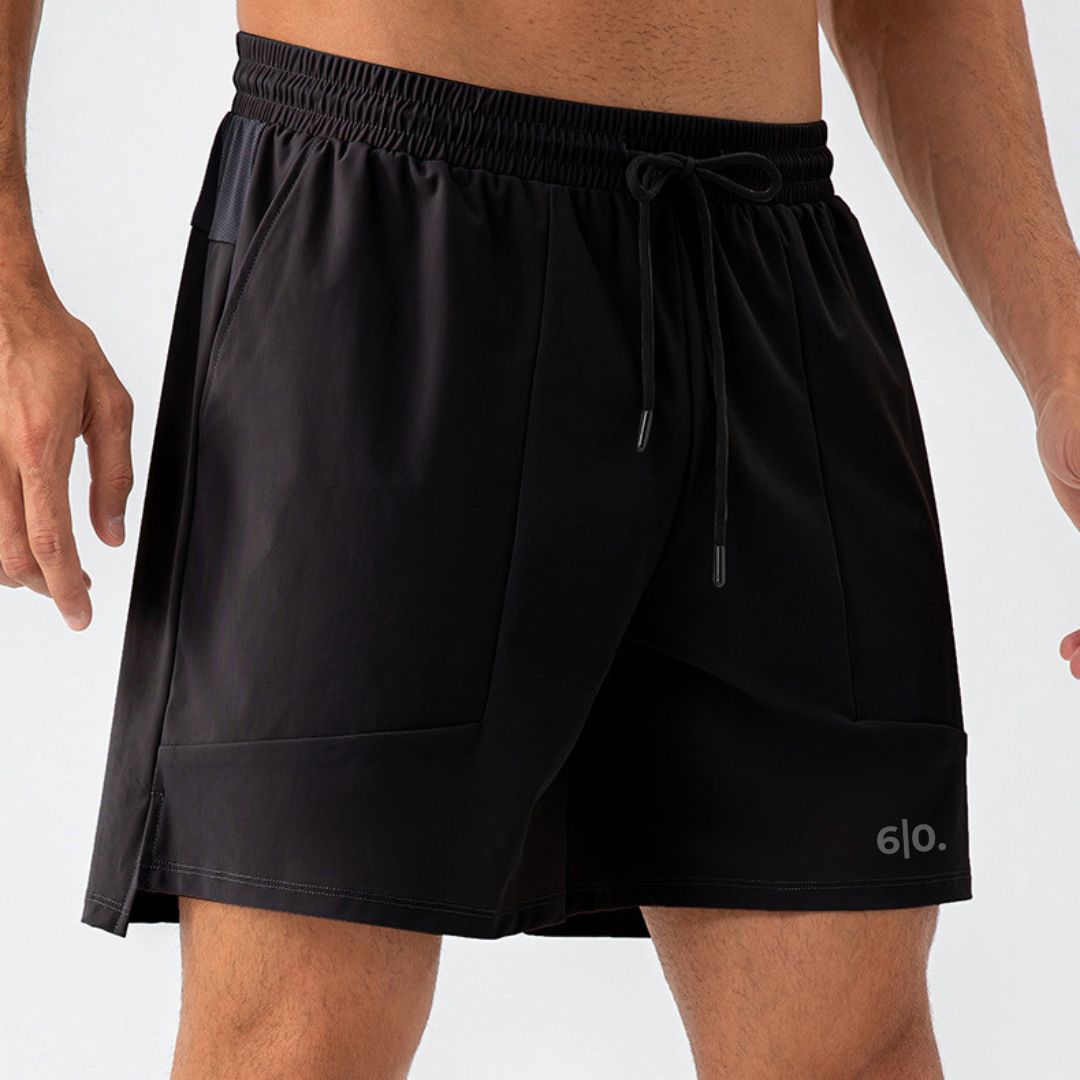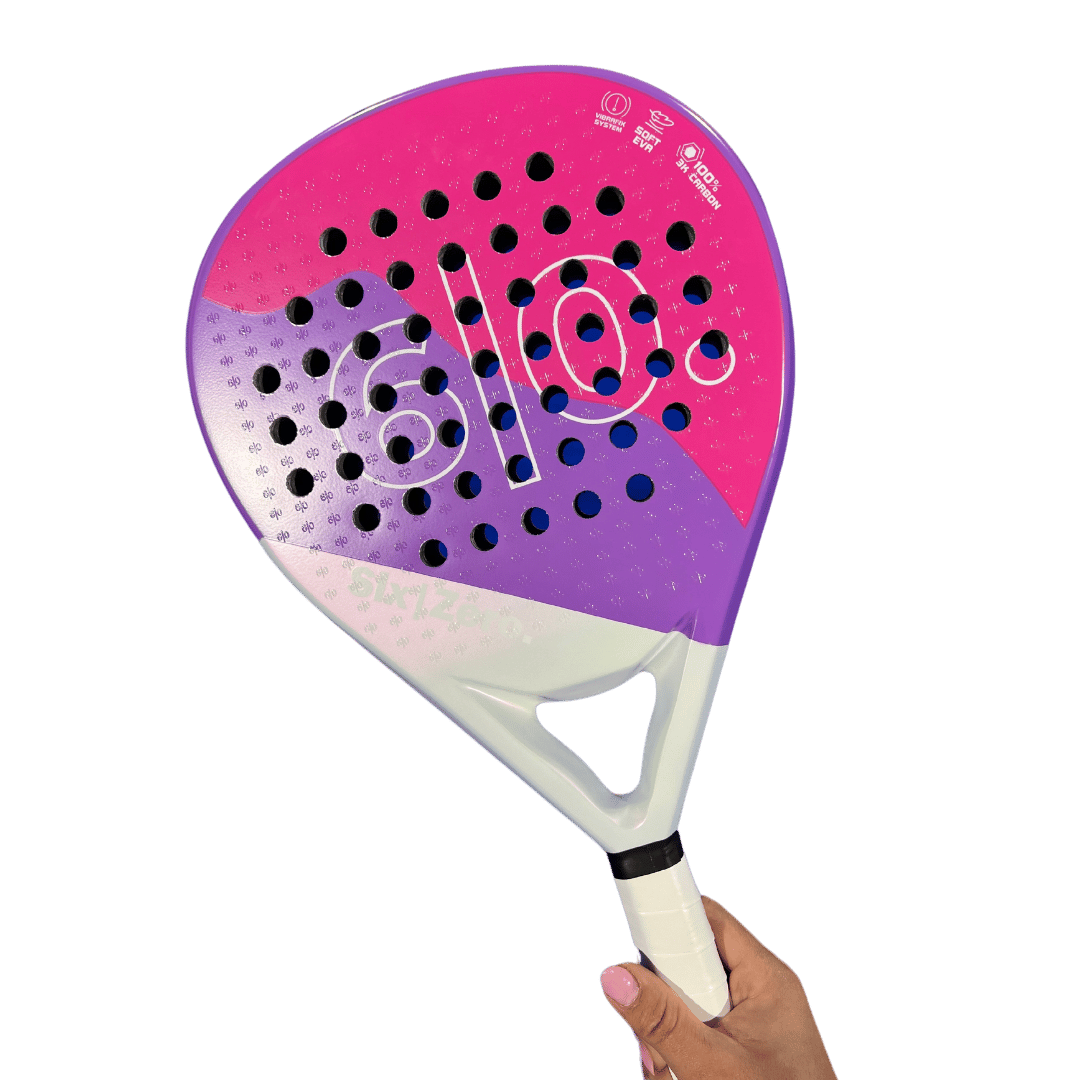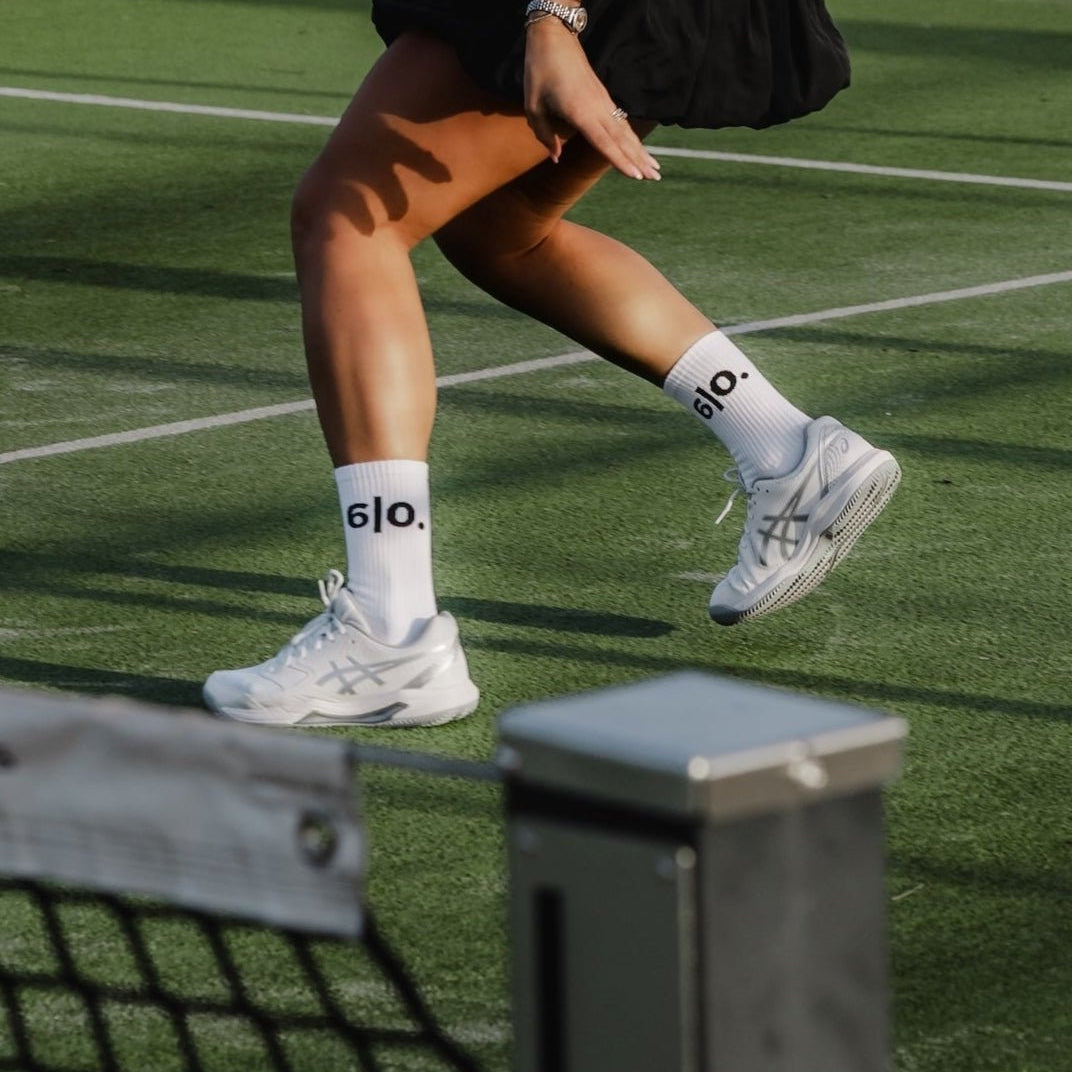Padel is a dynamic racquet sport that demands quick lateral movements, explosive power, and rapid directional changes.
Unlike casual recreational activities, this fast-paced game places significant stress on your muscles, joints, and connective tissues. A proper warm-up routine specifically designed for padel is not just beneficial—it's essential for preventing injuries and optimizing your performance on court.
In this comprehensive guide, you'll discover a structured, science-backed approach to warming up for padel that prepares your body for the game's unique demands while significantly reducing your injury risk.
Why warm up matters in padel
A proper padel warm-up routine does far more than just "get you ready to play." According to sports physiotherapist Marco Gonzalez, who works with professional padel players, "The biomechanical demands of padel—rapid direction changes, overhead movements, and explosive sprints—create significant stress on joints and muscles that aren't properly prepared."
Warming up increases your core body temperature and blood flow to working muscles, which improves oxygen delivery and nutrient transport.
This physiological preparation enhances muscle elasticity, reaction time, and neuromuscular coordination—all critical factors in padel performance and injury prevention.
Research published in the Journal of Sports Science and Medicine found that sport-specific warm-ups reduced injury rates by up to 35% in racquet sports players. For padel specifically, a proper warm-up helps prevent common issues like:
Common padel injuries and how warm-ups help prevent them
- Tennis elbow (lateral epicondylitis): Dynamic wrist and forearm exercises prepare these areas for the repeated strain of racquet strikes
- Ankle sprains: Balance exercises and gradual mobility work strengthen stabilizing muscles around the ankle joint
- Hamstring strains: Progressive activation through dynamic stretching increases tissue temperature and elasticity
- Rotator cuff injuries: Shoulder mobility drills prepare these vulnerable joints for overhead shots
- Knee injuries: Lower body activation exercises strengthen supporting musculature around this crucial joint
Components of an effective 10-minute padel warm-up
An optimal padel warm-up routine progresses through four distinct phases: general cardiovascular activation, dynamic mobility work, targeted muscle activation, and finally, sport-specific movement patterns. This scientifically-designed progression ensures your body transitions safely from rest to high-intensity play.
1. General cardio activation (2–3 minutes)
Begin with light cardiovascular exercise to increase your heart rate gradually and elevate your core temperature. This phase primes your circulatory system and prepares your muscles for more intense activity.
- Court jogging: Jog lightly around the perimeter of the court to stimulate blood flow
- Side shuffles: Move laterally in both directions to activate hip adductors and abductors
- High knees: Perform gentle high-knee marching to activate your hip flexors and core
- Heel kicks: Lightly kick your heels toward your glutes to begin activating your hamstrings
Focus on gradually increasing intensity rather than immediately pushing to high exertion levels. Your breathing should deepen but not become labored during this phase.
2. Dynamic mobility exercises (2–3 minutes)
Once your circulation has increased, progress to dynamic mobility work that addresses the key joints involved in padel movements. These exercises enhance your range of motion while maintaining the increased tissue temperature from your cardio activation.
- Leg swings: Front-to-back and side-to-side leg swings to mobilize hips
- Hip circles: Standing hip rotations to lubricate hip joints and activate hip rotators
- Trunk rotations: Gentle twisting movements to prepare your core and spine for rotational shots
- Arm circles: Forward and backward arm rotations of increasing size to mobilize shoulder joints
- Wrist circles and flexion/extension: Prepare the wrists for racquet handling
Perform these padel mobility exercises in a controlled manner, gradually increasing range of motion rather than forcing stretches.
3. Muscle activation (2 minutes)
The third phase targets specific muscle groups that provide stability and power during padel play. These exercises "switch on" crucial muscles before they're called into action during high-intensity movement.
- Bodyweight squats: 8-10 reps to activate quads, glutes, and core muscles
- Glute bridges: 8-10 reps to engage posterior chain muscles essential for explosive movements
- Plank shoulder taps: 8-10 alternating taps to activate core stabilizers
- Band pull-aparts: 10-12 reps to engage upper back and rotator cuff muscles
Focus on proper form and muscle engagement rather than speed during this phase. The goal is neuromuscular activation, not fatigue.
4. Padel-specific movement drills (2–3 minutes)
The final warm-up phase incorporates movement patterns specific to padel gameplay. These drills bridge the gap between general preparation and actual play by introducing sport-specific coordination.
- Split-step practice: Perform 10-12 split steps with directional movement, mimicking match reactions
- Shadow swings: Execute forehand, backhand, and volley motions without impact
- Multi-directional movements: Practice diagonal, forward, and lateral court movements
- Light ball touches: If possible, incorporate gentle rallying with progressive intensity
These padel-specific drills prime your neuromuscular system for the exact patterns you'll use during gameplay, creating a smooth transition into your match.
Example warm-up routine with timed segments
This comprehensive 10-minute padel warm-up routine incorporates all essential elements while staying time-efficient. Follow it precisely for optimal preparation:
- 0:00-1:00: Light jogging around court perimeter. Focus on gradually increasing pace.
- 1:00-2:00: Side shuffles and high knees. Alternate 15 seconds each, emphasizing control over speed.
- 2:00-2:30: Forward and side leg swings. 10 swings each direction, each leg.
- 2:30-3:00: Hip circles and trunk rotations. 8 rotations in each direction.
- 3:00-3:30: Arm circles and wrist mobility. Forward and backward circles, increasing size.
- 3:30-4:15: Bodyweight squats and glute bridges. 8-10 controlled repetitions of each.
- 4:15-5:00: Plank shoulder taps and band pull-aparts. Focus on stable core during taps.
- 5:00-6:00: Split-step practice with directional movement. React to partner's hand signals.
- 6:00-7:00: Shadow swings for all primary shots. Progress from slow to match-speed movement.
- 7:00-8:30: Multi-directional movement drills. Focus on push-off technique and balance.
- 8:30-10:00: Light ball touches with partner. Gradually increase intensity toward match pace.
Tips for maximizing your warm-up under time constraints
Even with limited time before a match or practice session, you can still prepare effectively. This condensed approach combines essential elements to maximize your preparation when facing time pressure.
For a 5-minute micro routine, prioritize these elements:
- Combined cardio and mobility (2 minutes): Perform dynamic movements like leg swings while jogging in place to simultaneously raise heart rate and improve mobility
- Essential activation (1.5 minutes): Focus on quick activations of the most crucial muscle groups: 8 bodyweight squats, 8 glute bridges, and 8 push-ups
- Abbreviated sport-specific work (1.5 minutes): Prioritize split-steps and shadow swings for the most common shots you'll use
Equipment-free adaptations make warming up possible anywhere:
- Replace band exercises with isometric contractions (like wall presses for chest and shoulders)
- Use bodyweight resistance for all strengthening movements
- Focus on movement quality rather than quantity when time-limited
Common mistakes to avoid during your warm-up
Even experienced players often make warm-up errors that reduce effectiveness or increase injury risk. Being aware of these pitfalls can significantly improve your preparation quality.
- Static stretching too early: Holding fixed stretches at the beginning of your warm-up can actually decrease performance and increase injury risk. Solution: Save static stretching for after your match.
- Neglecting sport-specific movements: General warm-ups without padel-specific patterns leave your neuromuscular system unprepared. Solution: Always include shadow swings and court movement patterns.
- Excessive intensity: Treating the warm-up like a workout depletes energy reserves before play begins. Solution: Focus on activation and preparation, not exhaustion.
- Rushing through movements: Speed-focused warm-ups sacrifice quality and neural patterning. Solution: Perform each movement with deliberate control before increasing pace.
- Ignoring environmental factors: Failing to adapt your warm-up to temperature, humidity, and court conditions. Solution: Extend warm-up time in cold conditions and pace yourself in heat.
The role of mental preparation in your warm-up
Physical readiness is just one component of effective match preparation. The mind-body connection plays a crucial role in injury prevention and performance optimization during gameplay.
Integrate these mental techniques into your physical warm-up:
- Breath focus: Incorporate 4-count box breathing (inhale, hold, exhale, hold) during mobility exercises to center your attention and reduce pre-match anxiety
- Visualization: During shadow swings, mentally rehearse successful executions of key shots and movements
- Attentional cues: Establish 2-3 technical focus points for your upcoming match during your warm-up
- Routine development: Create consistency with a standardized pre-match sequence that signals game-readiness to your nervous system
Certified sports psychologist Dr. Elena Martinez emphasizes that "mental preparation during warm-ups creates a psychological readiness that directly correlates with injury prevention. When mentally present, players make better movement decisions and maintain proper body mechanics."
Conclusion
A structured, comprehensive padel warm-up routine isn't merely a pre-game formality—it's essential injury prevention that directly impacts your performance and longevity in the sport. By dedicating just 10 minutes to this progressive warm-up method, you'll prepare your body's systems to handle the unique demands of padel while significantly reducing your injury risk.
Remember that consistency is key—make this warm-up routine part of your standard pre-game protocol rather than an optional addition. Your body will respond with improved performance, greater resilience to physical stress, and a reduced likelihood of both acute injuries and chronic overuse problems.
Frequently asked questions
How long should I warm up before playing padel?
A 10–15-minute warm-up covering general cardio, dynamic mobility, muscle activation, and padel-specific drills is ideal.
Can I do static stretches before a padel game?
It's best to reserve static stretching for after play; before a match, dynamic stretching warms muscles safely.
What are the best padel-specific warm-up exercises?
Split-step hops, shadow swings, mini on-court rallies, plus leg swings and glute bridges to activate key muscles.
How does warming up reduce padel injuries?
It raises muscle temperature, increases blood flow, activates joints, and primes neural pathways—cutting tear and sprain risks.
What if I only have 5 minutes to warm up for padel?
Combine high-knee jogging, leg swings, shoulder circles, and split-step drills into a 5-minute micro routine for basic prep.
